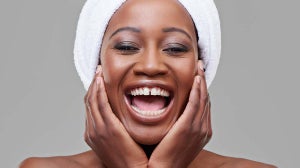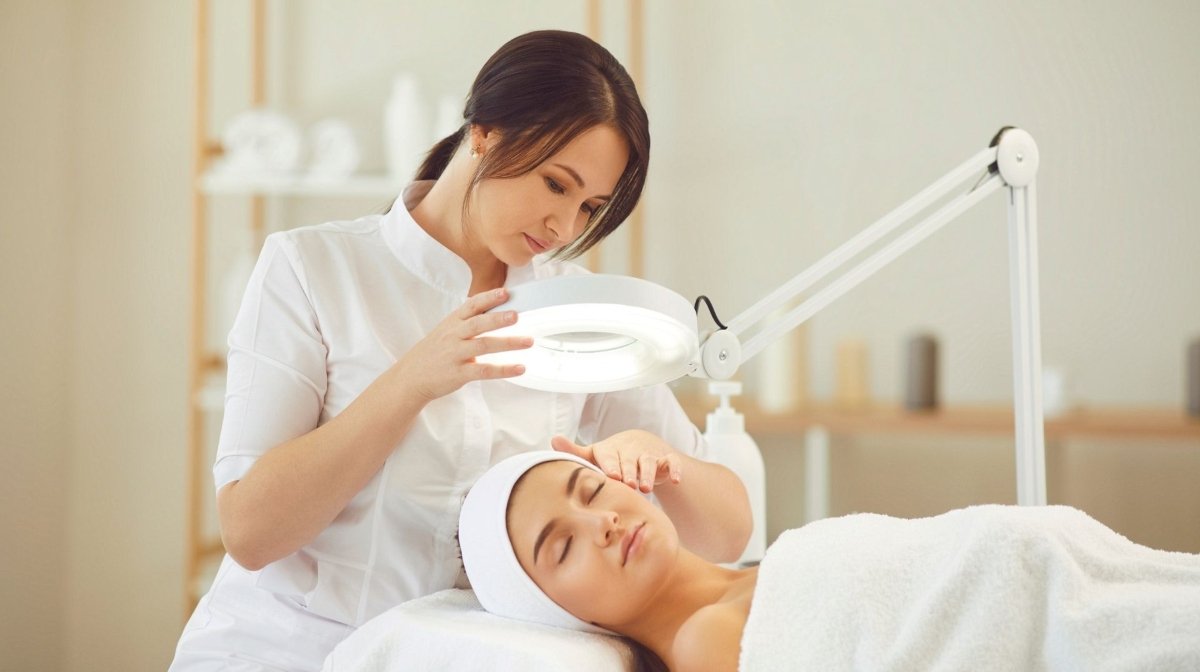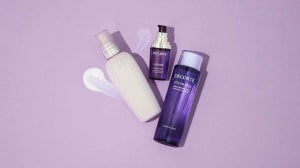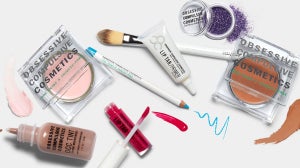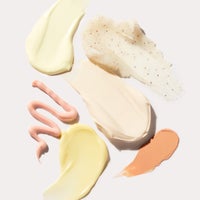
Facials are, hands down, one of the best ways to reset and recharge the skin while indulging in some pampering “me” time. While relaxation may be the goal of facials for some, the ultimate purpose of routine facials is to maintain healthy skin via a routine of cleansing, exfoliating,nourishing, and treating the skin. When utilized as part of a holistic skincare routine, facials can be the key to keeping the skin clear, glowing and well-hydrated so that the skin looks youthful.
Today’s facials range from the standard European facial most of us think of to more complex, targeted treatments that employ microcurrent energy, LED light, innovative chemical peels, and even supercharged active ingredients to amp up the skin’s health and appearance. Here’s everything you need to know about facials, from how they work to their benefits and how to do one yourself at home.
Table of Contents:
- What Is a Facial?
- Facial Benefits
- The Different Types of Facials
- Spa Facial Treatments vs. At-Home Facials
- What to Expect When Getting A Facial
- How to Choose the Right Facial for Your Skin Type
- How to Prepare for a Facial and Post-Facial Care
What Is a Facial?
While you may liken a facial to a foo-foo pampering experience at a spa, truth be told, a facial is far more than just that. This tailored skin care treatment purifies the skin to remove dirt, oil and impurities from within the pores while hydrating it. While the specifics of a facial vary from provider to provider since most put their own spin on it, the basics of a facial consist of cleansing, steaming, extractions, and light massage. From there, your esthetician can add skin treatments like chemical peels and LED light onto the facial to boost the overall effects.
Facials are designed to improve the overall health of the skin and target specific skin-related issues. This is achieved by first cleansing the skin, then exfoliating it with either a physical or chemical exfoliation to lift dead skin cells and other impurities off the skin’s surface.
With a clean slate, the skin is treated to a ten or 15-minute steam emitted through a machine to help open up the pores, which helps make extractions easier. While the steam portion of the facial occurs, your esthetician may treat you to a hand or foot massage. Next comes extractions, a vital part of the facial since they dislodge trapped contents from the pores. Extractions, which safely remove blackheads, whiteheads and other mild acne pimples, should be comfortable if not too much force is applied. Following extractions is a skin-boosting and circulation-improving massage, which will help bring blood to the surface for a healthy glowy. Finally, a mask that targets your skin’s condition is layered onto the skin.
Facial Benefits
The benefits of a facial range from deep cleaning the pores to improving the skin’s tone and texture, infusing it with moisture, and promoting a healthy complexion while addressing specific skin concerns. Regular facials provide cumulative skin benefits, but that doesn’t mean you can't reap benefits from a single facial because you can.
While many people indulge in facials for their relaxing benefits, the real goal of a facial is to help improve the skin's health on the face, neck and décolleté. Post-facial skin is always glowy and well-hydrated, but there are other benefits to a facial besides just healthy-looking skin, such as:
- Improved collagen production
- Fewer dead skin cells on the skin’s surface for brighter-looking skin
- A reduction in fine lines, wrinkles and blemishes
- Clearer pores
- Well hydrated skin
- Younger-looking skin
- A more sculpted and lifted appearance
- Improved circulation and cellular health
During a facial, your esthetician can address specific skin concerns by implementing certain steps and ingredients to help mitigate skin issues like acne, roughness, dull texture, and dryness. A thorough skin analysis will help your esthetician identify the most pressing skin concerns so that the facial can be customized to treat those issues.
The Different Types of Facials
Finding the time to schedule an appointment for a facial is one thing, but deciding on what facial your skin will benefit most from is a whole other ballpark. With so many different types of facials to choose from, selecting the best one for your skin can be daunting. The options are endless, from signature facials to classic European ones and even anti-aging and acne-fighting facials.
Most facials are an offshoot of the European facial comprised of cleansing, steaming, extractions, massage, and a mask. From there, the facial can be tailored to include additional steps or specific products to hone in on a particular skin concern.
- Hydrating facials often include moisturizing masks (sometimes more than one) to help infuse the skin with much-needed hydration. HydraFacials are also popular for adding moisture back into the skin since the treatment uses a mix of suction, exfoliation and extraction while pushing hyaluronic acid, antioxidants and peptides into the skin.
- Sculpting facial help lift, define and contour the face with gua sha techniques or microcurrent technologies for a more ‘snatched’ look by draining out water retention and toning the muscles for improved shape in the cheeks and jawline.
- Anti-aging facials focus on common signs of aging like fine lines and wrinkles, loose skin, discoloration and dryness. The key elements of an anti-aging facial are to increase skin cell turnover and stimulate collagen production.
- Anti-acne facials usually include chemical peels or high-frequency wands to help kill pimples at the source. Often extractions are critical for unclogging the pores, as are ingredients like glycolic and salicylic acid, which can help prevent future breakouts.
- Acupuncture facials help diminish the appearance of fine lines and wrinkles by stimulating collagen production and increasing blood flow through acupuncture needles placed into the skin. These tiny needles create micro-injuries in the skin that stimulate new collagen production as part of the healing process.
- Brightening facials benefit skin battling discoloration, post-inflammatory hyperpigmentation and uneven skin tone. Most brightening facials incorporate a chemical peek to help slough off discoloration in the skin while hydrating it.
- Oxygen facials help breathe new life into dull and tired skin by infusing the skin with special serums and oxygenating the skin.
Spa Facial Treatments vs. At-Home Facials
Facials can be done at home and the spa and each has pros and cons. While a professional esthetician-administered facial is undeniably the way to go if you’ve never performed a facial on yourself, some people enjoy the act of at-home facials and find it to be a form of self-care and ‘me’ time. Truth be told, DIY facials existed long before professionally administered facials and were the first form of facials thousands of years ago.
At-home facials are relatively quick, easy to perform, and far less expensive than the spa. You'll need to set aside some time to do a facial at home and a few skincare products and tools. You can even use basic kitchen staples like avocado as a base for a hydrating mask, yogurt to calm inflamed skin and even milk for a light exfoliant if you want to keep things natural and with a homemade spin. However, extractions should always be left to a professional since there’s less risk of infection and scarring.
On the other hand, a professional spa facial allows an experienced skin care professional to assess your skin and treat it accordingly. Licensed estheticians have a deep understanding of skin health, a minimum of 300 to 1500 hours of training and must pass state exams. They also have access to products with more potent active ingredients. Some estheticians practice under the supervision of a dermatologist and can use professional medical-grade equipment to improve the skin.
Some people like professional spa facial treatments to do the heavy lifting and at-home facials to keep their skin healthy and clean in-between appointments.
What to Expect When Getting A Facial
A typical facial session, which can last about 60 minutes, involves various steps that each have a specific purpose in improving the health of your skin and particular concerns. Any professional facial should always start with a thorough skin assessment under a bright light. You can communicate with your esthetician about skin issues and the treatment goals during this time.
- First, you’ll hop up onto the treatment bed and slide into place. You can change into a spa robe and get comfortable under a spa sheet and blanket to make the facial comfortable. You will also need to pull your hair off your face with a headband.
- The skin will be cleansed as the first step in your facial to remove all makeup. As your esthetician cleanses your skin, they can examine the bare skin and asses it even better.
- With clean skin in tow, a steam machine is turned on, emitting steam into the air to help soften the skin and hairs and open the pores to loosen congestion. The steam portion of a facial increases circulation and allows the skin to absorb ingredients and products that your esthetician will apply throughout the facial.
- Next comes exfoliation using either a manual or chemical exfoliation depending on your skin type and its level of sensitivity. The purpose of exfoliation is to remove dead skin cells from the surface and smooth out the skin’s texture.
- After the skin is exfoliated, extractions remove any black or whiteheads from the surface. Not every blemish is ideal for extractions, so don’t be upset if a few are still on the skin post-facial—it’s for your skin’s benefit. Your esthetician will use sterile tools to push the pore's contents out from it without pushing dirt or bacteria back into it.
- Now that the skin is cleansed and clear of impurities, it’s time to calm it down. Your facialist will apply a skin-appropriate mask to help reduce redness and hydrate and nourish the skin. Sometimes, a series of masks may be used depending on the skin’s condition.
- Finally, a facial massage is performed with skin serums to help push them and their active ingredients further into the skin. The massage portion of the facial is where your esthetician can hone in on targeted treatments to address concerns like fine lines, overproduction of oil or dryness.
Before you leave your appointment, your esthetician will apply a light layer of sunscreen to help protect the skin, which should feel renewed and reenergized.
Some facials also incorporate additional tools or treatments like chemical peels, microdermabrasion, high-frequency wands, or microcurrent energy, depending on your skin's needs.
How to Choose the Right Facial for Your Skin Type
Facials run the gamut from basic, cleansing ones to more complex and targeted treatments. While every skin type, tone and age is a candidate for regular monthly facials (every 28 to 30 days is how long it takes the skin cells to regenerate), those with recurring acne breakouts, perpetually dry skin, stubborn discoloration, and common signs of aging and sun damage tend to appreciate the benefits of the treatment. On the other end of the spectrum, indulging in a facial when the skin is problem-free (lucky you!) can be the perfect way to relax your mind, body and soul while rejuvenating the skin and maintaining its health.
Ultimately, when choosing the right facial for your skin, the facial should be based on your skin type to reap the benefits. Normal and dry skin responds well to moisturizing masks and hydrating serums and creams with light exfoliation. At the same time, mild facial products work well for combination skin to not promote breakouts. On the other hand, those with oily skin and acne should select facials that focus strongly on cleansing and extractions to help reduce the incidence of clogged pores and inflammation. And sensitive skin should be careful about aggressive or acid-heavy facials and opt for ones with natural ingredients and even oxygen.
Even though facials are a godsend for many people, there are potential considerations for specific skin types that you shouldn’t gloss over. For example, you’ll want to avoid a facial if your skin is sunburned, there are active or open wounds or sores or cold sores, or if an active rash or allergic reaction persists. It’s also a good idea never to try out a new facial in the days leading up to a big event just in case your skin doesn’t respond well to the treatment.
How to Prepare for a Facial and Post-Facial Care
There are a few expert-recommended tips and tricks to follow to get the skin in an optimal state for a facial so it can best receive the treatment. In the days leading up to your facial, you’ll want to note any pressing skin concerns and write them down so you can share them with your esthetician. You’ll also want to avoid using skincare products that are irritating, drying or harsh on the skin. Steer clear of products that exfoliate the skin for about five days before a facial. Men should also not shave their faces the day before or the day of a facial.
Post-facial skin care is equally as important as the prep steps. It’s normal for the skin to be a bit red or even break out after a facial since all the contents inside the pores and the skin are stimulated during the treatment. If redness and blemishes persist, apply a light spot treatment to help shrink the pimples and a calming serum to help reduce any flushing. You’ll also want to avoid using retinol, alcohol-based toners or any exfoliating ingredients for the first 24 to 48 hours post-facial, particularly if a chemical peel was applied. Gentle products that calm the skin are the way to go and never skimp on applying daily sunscreen.
Shop all Skincare Treatments & Facial Tools at SkinStore!

Related Articles
